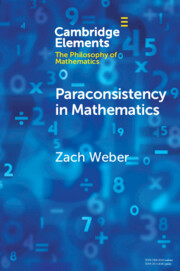Element contents
Paraconsistency in Mathematics
Published online by Cambridge University Press: 25 July 2022
Summary
Keywords
- Type
- Element
- Information
- Online ISBN: 9781108993968Publisher: Cambridge University PressPrint publication: 11 August 2022
References
- 15
- Cited by



